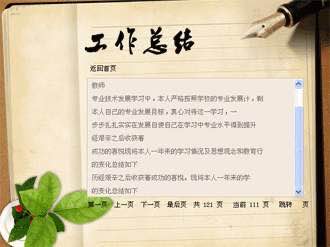高二英语必修五知识点总结最新【词语】1.firstaid的意思是“急救”,例如:firstaidtotheinjured给予伤员的急救。短语联想give/o下面是小编为大家整理的高二英语必修五知识点总结最新7篇,供大家参考。

高二英语必修五知识点总结最新篇1
【词语】
1. first aid 的意思是“急救”,例如:first aid to the injured 给予伤员的急救。
短语联想
give/offer aid 援助 come to sb"s aid 帮助某人
teaching aids 教具 medical aid 医疗救护
with the aid of 借助于
get injured 受伤,在现代英语中大量地出现了由“get + 及物动词不达意的过去分词”构成的被动语态,这叫 get - 型被动语态。又如:
The computer got (was)damaged when we were moving.
My bike is getting (is being)repaired row.
2. Protect 动词,“保护、维护”,用于句式“protect + 名词 + against/from + 名词”。
e.g. He is wearing sunglasses to protect his eyes from the strong sunlight.
【短语联想】
? Keep... from... 不让/避免
? stop... (from) ... 阻止
? prevent...(from) ... 妨碍/防止
?disable... from... 使……失去(能力/资格)
?save... from... 挽救、拯救
3.depend on 取决于。
e.g. The amount you pay depends on where you live.词义拓展
depend on 依靠,依赖:His family depends on him. 他的一家人全靠他养活。
依赖,信任:We are depending on you to finish the job by Friday.
4. squeeze 动词,意思是“榨取”、“挤出”,例如:squeeze an orange 榨橘子
squeeze + 名词 + out(of/from) + 名词,
e.g. Those blackmailers intended to squeeze more money out of him.
5. hurt 既可作及物动词,作“伤害”、“使受伤”解,也可作不及物动词,作“疼痛”、“感到疼痛”解。既可表达身体的受伤,也可以表达情感的伤害。例如:
e.g. The little boy has fallen off a ladder and hurt himself.
The driver hurt himself in the accident. 司机在事故中受了伤。
6. unless 除非……;如果不……。如:
7. icy adj. 冰凉的
-y 是个形容词后缀。如:
windy 有风的 hilly 多小山的 sleepy 困倦的
greeny 略呈绿色 spicy 辛辣的 woody 树木茂密的
thirsty 饥渴的 dirty 脏的 snowy 下雪的
8. in place 放在适当的地方。如:
e.g. The librarian put the returned books in place. 图书管理员把还回的图书放到原处。
Yon"d better put things back in place.Otherwise, it will be difficult to find things.
9. sense n. 感觉
?sense of touch 触觉 sense of sight 视觉
? sense of hearing 听觉 sense of smell 嗅觉
? sense of humour 幽默感 sense of beauty 美感
?ense of hunger 饥饿感 the sixth sense 第六感
10. variety n. 多样, 种类,
★ a variety of… 各种各样……
高二英语必修五知识点总结最新篇2
一、不定式做主语:
1、不定式做主语一般表示具体的某次动作。===动名词doing 表示习惯的,经常的动作。
e.g: To finish the building in a month is difficult.
To do such things is foolish.
To see is to believe. (对等)
注: 1). 不定式作主语时,谓语用单数
2). 当主语较长,谓语较短时,常用it做形式主语,而将不定式放到谓语的后面。
it做形式主语,不定式放在谓语动词之后常用于下列结构中:
(1)It is/was +adj.+of sb. to do…
(2) It is +adj.+for sb.+to do…
It is easy / difficult / hard / foolish / unwise / right / wrong / unnecessary
(3) it is +a +名词+ to do...
It is a pity / a pleasure / a pleasant thing / one’s duty / an honor / a shame / a crime / no easy job… to do
It takes (sb.) some time / courage / patience …to do…
It requires courage / patience / hard work… to do…
注意: probable 和 possible 均可作表语,但possible可以用不定式作真实主语, 而probable不能用不定式作真实主语。
It is probable for him to come to the meeting.(错)
It is possible for him to come to the meeting.
It is possible / probable that he will come to the meeting.
二、不定式做表语
主语是以aim duty hope idea intention plan job suggestion wish purpose task 等为中心词的名词词组 或以 what 引导的名词性从句表示,后面的不定式说明其内容, 不定式作表语常表示将来或现在的动作或状态。
eg :My idea is to climb the mountain from the north.
Your mistake was not to write that letter.
What I would suggest is to start work at once.
三 、动词不定式作宾语
以不定式结构为宾语的动词有:
ask, agree, care, choose, demand, decide, expect, fail, help, hope, learn, manage, offer, plan, prepare, pretend, promise, refuse, want, wish等只能用动词不定式作宾语
口诀(接不定式作宾语的动词)
想要学习 早打算( want learn plan)
快准备 有希望( prepare hope wish expect)
同意否 供选择(agree offer choose)
决定了 已答应(decide be determined promise)
尽力去 着手做(manage undertake)
别拒绝 别假装(refuse pretend)
失败不是属于你(fail)
e.g.Tom refused to lend me his pen.
We hope to get there before dark.
The girl decided to do it herself.
高二英语必修五知识点总结最新篇3
一、引导主语从句的连词主要有:
从属连词:that whether
连接代词:who whoever whom whose what whatever which whichever
连接副词:when where how why
二、用法
主语从句是在复合句中充当主语的从句,通常放在主句谓语动词之前或由形式主语it代替,而本身放在句子末尾。
1. It 作形式主语和it引导强调句的比较
①主语从句常用it作形式主语,一般常用句型为:It is+{名词/形容词/过去分词}+主语从句例如:
It is still a question whether she will come or not.
It is strange that you should like him.
It is still unknown which team will win the match.
另外,还有一些比较多见的结构:
It turned out that……;
It has been proved that……;
It happened/occurred that……;
It is well-known that……等等
②而强调句则不同,它的结构是:It+be+被强调部分+that+从句
强调主语:It is the times that produce their heroes.时势造英雄
强调宾语:It is English that Prof.Lin teaches us.
强调状语:It was in shanghai that I saw the film.
判断是否是强调句有一个方法,就是将that以后的“句子的其余部分”拿出来单独看,看有没有缺成分,缺的是什么成分,再把谓语动词后面that前面的那部分,带到你认为缺成分的地方,如果放进去是一句完整的句子了,那就说明是强调句。
2. 用it 作形式主语的结构
(1) It is +名词+that从句
It is a fact that … 事实是……
It is an honor that …非常荣幸
It is common knowledge that …是常识
(2) it is +形容词+that从句
It is natural that… 很自然……
It is strange that… 奇怪的是……
(3) it +不及物动词+that从句
It seems that… 似乎……
It happened that… 碰巧……
(4) it is+过去分词+that从句
It is reported that… 据报道……
It has been proved that… 已证实……
3.主语从句不可位于句首的五种情况
(1) if引导的主语从句不可居于复合句句首。
(2) It is said , (reported) …结构中的主语从句不可提前。例如:
It is said that President Jingo will visit our school next week.
(3) It happens…, It occurs… 结构中的主语从句不可提前。例如:
It occurred to him that he failed in the examination.
(4) It doesn’t matter how/whether …结构中的主语从句不可提前。例如:
It doesn’t matter whether he is wrong or not..
(5) 含主语从句的复合句是疑问句时,主语从句不可提前。例如:
Is it likely that it will rain in the evening?
4. What 与that 在引导主语从句时的区别
What 引导主语从句时在从句中充当句子成分,如主语.宾语.表语,而that 则不然。例如:
What you said yesterday is right.
三、宾语从句用以区分主语从句的几个特征
1、引导词:what which whose when whet herif where
2语序:宾语从句必须是用陈述语句。(名词性从句都是陈述语序)
如:I think that you must work harder.
宾语从句的引导词、连接词的区别、否定转移等现象。
补充:从句的语序永远是陈述句。
高二英语必修五知识点总结最新篇4
1)starve作不及物动词,表示“饿死,挨饿”。starve for=be starve of/for,表示“渴望获得,迫切得到”。
2)plenty作不可数名词,只用于肯定句中,表示“充足,大量,富裕”,可做主语,宾语或表语。做主语时,谓语动词随着plenty所指的单复数形式作相应的变化。 plenty也可作副词,表示“充分地,十足地,好多”。 in plenty表示“大量的,丰富,充裕”可作表语,定语,状语。
3)satisfy作及物动词,表示“满意,使满足”,直接跟宾语,若接that从句时,意思是“使相信”,从句前有间接宾语。 satisfy?with以满足be satisfied with对满足satisfy?for向偿还be satisfied to do sth满足于做某事
4)harm作名词,意为“损害”,不与不定冠词连用,常与do,come,mean等动词搭配。 do more harm than good弊大于利There’s no harm in(sb’s)doing sth=It does no harm for sb to do sth做某事无害处作及物动词,表示“损害,伤害”。
5)trick:play a trick on sb=play sb a trick开某人的玩笑,诈骗某人do/turn the trick达到(预期的)目的,获得成功。 have a/the trick of doing sth(有)做……的习惯/癖好。 be up to tricks,be at one’s tricks玩鬼把戏,闹恶作剧。trick可以做动词,trick sb into doing骗某人去做某事trick sb out of?骗取某人
6)memory是名词,表示“记忆”时,接for而不接of。复数形式memories可表示往事。 in memory of纪念,一般表示对死者的纪念。 lose one’s memory“失去记忆”,可能永远也想不起来;而slip sb’s memory指一般想不起来,可能不知道什么时候又想起。
7)admire作及物动词,只能接名词或者代词作宾语,不能接宾语从句。admire to do高兴做admire sb for sth在某方面钦佩某人admire at对感到羡慕,对感到惊讶
8)look forward to盼望,期待push one’s way forward挤着向前走come forward走出来put forward提出backward and forward来回。
9)take place表示“发生”有计划的,有目的的,有准备的发生,是不及物动词,无宾语,不能用于被动语态。区别take place,happen,break out:take place有计划的发生,多指运动,变化,进步,会议,婚礼等;happen偶然发生或者意外事件的发生;break out表示“突然发生,爆发”,强调出人意料,多指地震,火灾,火山,战争,疾病,瘟疫等的突然发生。 take one’s place表示“代替某人,执政,上台”。 take the place of表示“取代,代替”。
10)Apologize:apologize to sb for doing sth因为做了某事向某人道歉make an apology to sb for doing sth道歉。
11)set off:“出发,起程”,还可以表示“使爆炸,激发”。有关set的短语:
set up建立,树立,创立;set forth出发,起程,公布;set out开始,着手,出发;set about
着手,试图,开始;set fire to点火;set to doing sth开始做某事;set…aside把……放在一边;set sth down记下来;set …free将……释放
12)as though:表示“好像,似乎”,引导的从句谓语动词多用于虚拟语气。如果as though
从句中所叙述的情况是事实或有可能发生,也可用于陈述语气。其后面除了跟句子外,还可以跟名词,动词不定式,形容词(短语),介词短语或分词。还可以表示感叹语气,来对某项建议、假设或推测表示不赞成,惊讶,不满和厌恶等。
高二英语必修五知识点总结最新篇5
【词语】
1. first aid的意思是“急救”,例如:first aid to the injured给予伤员的急救。
短语联想
give/offer aid援助come to sb"s aid帮助某人
teaching aids教具medical aid医疗救护
with the aid of借助于
get injured受伤,在现代英语中大量地出现了由“get +及物动词不达意的过去分词”构成的被动语态,这叫get -型被动语态。又如:
The computer got (was)damaged when we were moving.
My bike is getting (is being)repaired row.
2. Protect动词,“保护、维护”,用于句式“protect +名词+ against/from +名词”。
e.g. He is wearing sunglasses to protect his eyes from the strong sunlight.
【短语联想】
? Keep... from...不让/避免
? stop... (from) ...阻止
? prevent...(from) ...妨碍/防止
?disable... from...使……失去(能力/资格)
?save... from...挽救、拯救
3.depend on取决于。
e.g. The amount you pay depends on where you live.词义拓展
depend on依靠,依赖:His family depends on him.他的一家人全靠他养活。
依赖,信任:We are depending on you to finish the job by Friday.
4. squeeze动词,意思是“榨取”、“挤出”,例如:squeeze an orange榨橘子
squeeze +名词+ out(of/from) +名词,
e.g. Those blackmailers intended to squeeze more money out of him.
5. hurt既可作及物动词,作“伤害”、“使受伤”解,也可作不及物动词,作“疼痛”、“感到疼痛”解。既可表达身体的受伤,也可以表达情感的伤害。例如:
e.g. The little boy has fallen off a ladder and hurt himself.
The driver hurt himself in the accident.司机在事故中受了伤。
6. unless除非……;如果不……。如:
7. icy adj.冰凉的
-y是个形容词后缀。如:
windy有风的hilly多小山的sleepy困倦的
greeny略呈绿色spicy辛辣的woody树木茂密的
thirsty饥渴的dirty脏的snowy下雪的
8. in place放在适当的地方。如:
e.g. The librarian put the returned books in place.图书管理员把还回的图书放到原处。
Yon"d better put things back in place.Otherwise, it will be difficult to find things.
9. sense n.感觉
?sense of touch触觉sense of sight视觉
? sense of hearing听觉sense of smell嗅觉
? sense of humour幽默感sense of beauty美感
?ense of hunger饥饿感the sixth sense第六感
10. variety n.多样,种类,
★ a variety of…各种各样……
【词语联想】
various a.不同的,各种的,多方面的,许多的
e.g. Everyone arrived late at the party for various reasons.
高二英语必修五知识点总结最新篇6
【First aid知识点】
1. first aid 的意思是“急救”,例如:first aid to the injured 给予伤员的急救。
短语联想:
give/offer aid 援助 come to sb"s aid 帮助某人
teaching aids 教具 medical aid 医疗救护
with the aid of 借助于
get injured 受伤,在现代英语中大量地出现了由“get + 及物动词不达意的过去分词”构成的被动语态,这叫 get - 型被动语态。又如:
The computer got (was)damaged when we were moving. 我们搬家的时候,电脑碰坏了。
高二英语必修五知识点总结最新篇7
【一般过去时】
1.一般过去时的定义
一般过去时表示过去某一时候或某一段时间所发生了的事情或存在的状态。常与过去时间yesterday, this morning, just now, a moment ago, in May, last night / year / week, once upon a time, the other day, before …, when – clause, in the past连用。如:
What did you do yesterday?昨天你干了什么?
I met Lin Tao this morning.今天上午我会到了林涛。
I was there a moment ago.刚才我在那儿。
2.一般过去时的应用
(1)表示过去某时所发生的动作或存在的"状态。如:
Liu Ying was in America last year.刘英去年在美国。
Jim rang you just now.吉姆刚才给你打了电话。
(2)表示过去经常或反复发生的动作。常接时间副词often, usually, always, sometimes, every day / week, etc.如:
We often went out for a walk after supper.我们过去常在晚饭后散步。
We usually played together.我们通常一起玩。
3.一般过去时对谓语动词的要求
一般过去时的谓语动词要用动词的过去式。动词过去式的构成分规则变化和不规则变化两种形式,不规则变化通常需要逐个记忆,规则变化则遵循以下原则:
(1)一般在动词后加-ed。如:play—played, offer—offered, weigh—weighed, destroy— destroyed, sign—signed.
(2)在以字母e结尾的动词后,只加-d。如:like—liked, provide—provided, hate — hated, date—dated。
(3)在以“辅音字母+y”结尾的动词后,则改y为i,再加—ed。如:supply—supplied, fly—flied, study— studied.
(4)在以单短元音的重读闭音节结尾且,末尾只有一个辅音字母的动词后,双写最后一个辅音字母,再加-ed。如:plan—planned, refer—referred, regret—regretted, ban—banned.
4.特别说明
有些动词的过去时,如:expect, hope, intend, plan, wanted等一般过去时,后接不定式的完成时;或它们的过去完成时接不定式的一般式,都可表示过去未曾实现的意图、打算或希望。如:
I hoped to have been invited to his wedding party. —I had hoped to be invited to his wedding ceremony.我本希望他来邀请我参加他的婚礼。
I intended to have joined their games. —I had intended to join their games.我本打算参加他们的比赛。



